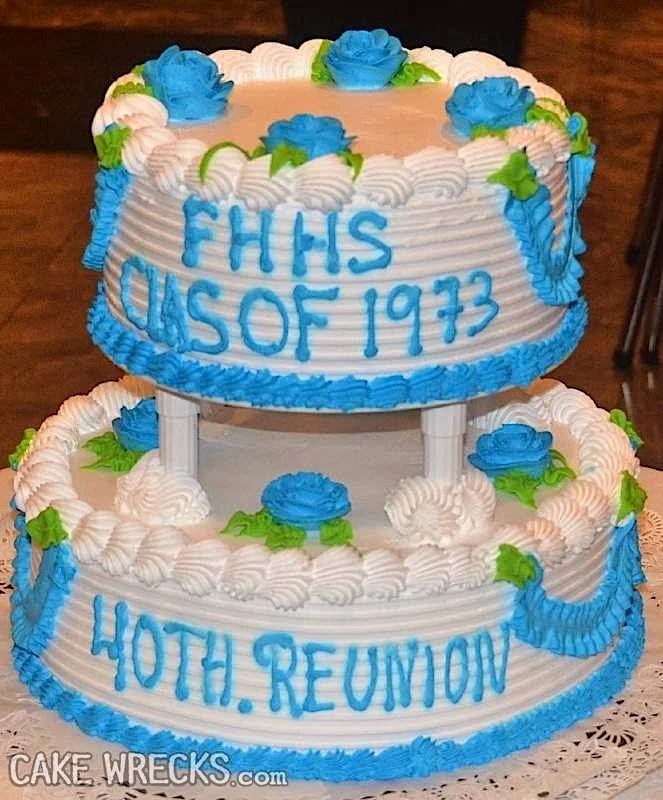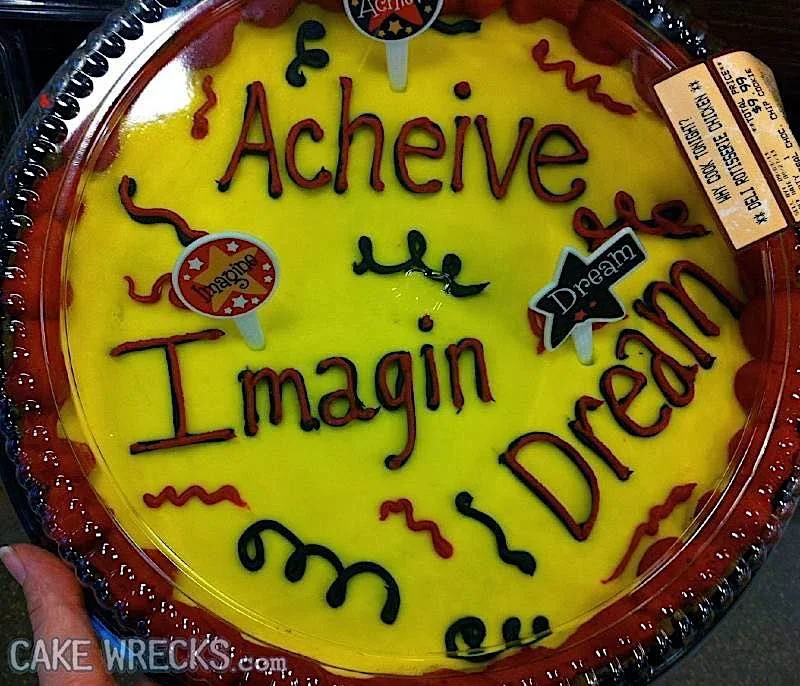Rec-Cember Day 3: Vid(s): Jagged Little Slayer (BtVS)
(Link goes to series page; see individual vids for content notes.)
This is an ambitious project to vid Buffy the Vampire Slayer to the entirety of Alanis Morissette's "Jagged Little Pill" album, one vid per song. A wide variety of pairings and characters are represented, and a lot of moods - dysfunctional and sad, uplifting and warm. I definitely have some favorites among these and some that weren't quite my thing (much like the songs on the album itself) but overall, it's an incredibly ambitious project, very nicely done, and there's probably something in here for almost every fan of the show. I didn't even realize I still had this much nostalgia for BtVS - it was one of those shows that I watched and enjoyed, but never really got into the fandom for - but wow, apparently I do, and this is a great tribute to all its ups and downs.
Daily Check-in
This is your check-in post for today. The poll will be open from midnight Universal or Zulu Time (8pm Eastern Time) on Wednesday, December 03, to midnight on Thursday, December 04. (8pm Eastern Time).
How are you doing?
I am OK.
12 (63.2%)
I am not OK, but don't need help right now.
7 (36.8%)
I could use some help.
0 (0.0%)
How many other humans live with you?
I am living single.
8 (42.1%)
One other person.
7 (36.8%)
More than one other person.
4 (21.1%)
Please, talk about how things are going for you in the comments, ask for advice or help if you need it, or just discuss whatever you feel like.
Openlands Lakeshore Preserve in Highland Park, Illinois

After the Haymarket Riot, the Commercial Club of Chicago saw a problem with the city; there was no nearby military garrison. The group had been campaigning since 1877 to build one close to Chicago, with efforts finally being realized ten years later after land was donated to the Federal Government. Ossian Cole Simonds was hired to create a site plan for what was to be known as Fort Sheridan, using the site's ravines and vistas as natural fortification. Fort Sheridan was used as a training site for the U.S military until it was shut down in 1993, some hundred years later. Part of this training included using live munitions - a foolhardy decision when subdivisions abut the training grounds. Openlands was transferred these former training grounds to repurpose it as a nature trail, until unexploded munitions were found in 2021 on the site, shutting it down until 2023. The lands reopened, however, in 2023, offering a beautiful vista of Lake Michigan.
Hopewell Centre Observation Elevators in Hong Kong

Despite having an iconic skyline and more skyscrapers than any other city in the world, Hong Kong has very few high-rise observation decks from which to view its distinctive cityscape, and most charge hefty entrance fees.
For those seeking sky-high views of the city with minimal physical effort and zero cost, head to Hopewell Centre's observation elevators. The lifts run between the 17th and 56th floors on the north side of the 66-story, 709-foot-high Hopewell Centre, the then-tallest building in Hong Kong upon its completion in 1980.
Their full-length curved glass windows give riders panoramic 180-degree views. As the elevator rises from the lower level, the first views that emerge are the neighboring buildings of Wan Chai. Gradually, the scenery morphs as the lift surpasses more of the surrounding buildings, revealing neighboring districts and the expanse of Victoria Harbor.
Despite having been in place for close to 50 years, the Hopewell Centre's observation elevators remain a hidden gem. Visitors will most likely have the lift pods to themselves as they experience the sensation of seemingly floating over Hong Kong Island, all while the breathtaking cityscape unfolds before them.
Oncoming default deadline
Default deadline
The deadline for a simple default on Yuletide is 9pm UTC on 10 December - just under one week from now. Please check the link - this isn't the same time of day as recent years.The default deadline is the cut-off point for defaulting on your Yuletide assignment without a penalty. This applies if it's your first Yuletide, or if you posted successfully last time you signed up or took a pinch hit. Default before this time, and you're free to sign up again in future. If you're not sure whether the default deadline applies to you, please talk to mods (yuletideadmin@gmail.com).
Sample reasons to default:
- You want to
- You can't reconcile the canon, your writing strengths, and your recipient's DNWs
- Life got in the way
- A new installment of canon ruined your ideas
- You use generative AI such as ChatGPT, and you just saw the rule that that's not allowed in this event
- You can't see how to get the characters to do what you want them to do
- You want to
People default every year for a variety of reasons. We don't need to know why, and we wish you well. When we open sign-ups, we recommend that you don't sign up unless you're confident you can write a story by the deadline. But after you've signed up, things may happen, and it's okay to withdraw, if that's what makes sense for you. See full information about defaulting at the FAQ.
To default, go to your assignment at the collection, and press the default button.
Assignment deadline
All original assignments, and all pinch hits sent out prior to the default deadline, are due at 9pm UTC 17 December (which is a DIFFERENT time of day to last year). CountdownPinch Hits
We have an outstanding pinch hit atBetas & Beta Help Needed
We warmly welcome beta reader volunteers at the beta post and on Discord. See the FAQ for more information about finding betas if you need one!Note: on the Yuletide Discord, requests for betas, or for brainstorming help that might give away what you're writing, are handled by DM-ing someone who currently holds a Hippo role. Please read the server FAQ before seeking a beta. Give your Hippo the relevant details and make sure you can receive messages back.
Treats and Posting
Click here for instructions on posting your assignment or treats. If you've finished your assignment and are considering treats, check out the app, and don't forget the promo post where people have advertised their canons. You may find something amazing there! Check out the prompts from pinch hitters too.Keep Yuletide Madness in mind. The Madness collection is for stories under 1,000 words and stories which do not exactly fit the fandoms and characters requested. These works must still be gifts for other participants.
AFK post
We will also put up an Away from Keyboard post shortly on theHappy December!
Please either comment logged-in or sign a name. Unsigned anonymous comments will be left screened. And specifically, if you would like to get a treat, we need your AO3 name so we know whom to give it to!
What I'm Doing Wednesday

I love him so much, y'all. I need to make another one to this scale in the red pants; then maybe I can bear to list one or both of them, once I know I can replicate him. I'm also tempted to make a version in the brown shirt, with a fern to go with, but I fear no one would buy it because it was too much a joke. Ah well. Maybe someone will commission it.
yarning
I've made so many cat toys this week! And a 12 1/2 inch cat kicker based on the National Parks Service official Walleye pattern (I added some rounds to make it bigger), only done in bright orange, like a goldfish. :g: I took only the fish to Thanksgiving to work on, which left me with days of nothing to make after I finished it. Doh!
etsy
yay selling things! I held a Black Friday sale to try to move some merchandise out of my house, and it succeeded fairly well. The discount was deeper than I'd quite prepared for, esp with free shipping, but worth it find some things their forever homes. I also figured out (I hope!) how to do Made To Order listings on etsy, so people can request a kickbunny in the colors of their choice without buying them in the wrong colors & sending me a note asking to switch the colors.
healthcrap
had to cancel the pain clinic procedure for lack of transportation, as expected. Tomorrow is a bone scan. I started drinking coffee again at my parents' place over Thanksgiving and have continued making a small amount every day. I hope it doesn't mess up my sleep?
yuletide
I have a draft! And I learned from the Yuletide Discord that there is such a thing as "unenforceable DNWs," which are things that are unreasonable to ask of your match in your signup/letter...which means that I could have written the story I wanted to write instead of the one that I did. Oh well. Good to know that I could have messsaged the mods with my concerns, even though I didn't. Hopefully the story I did write holds together well enough on its own merits? :crosses fingers:
I hope you're all doing well, wherever in the world you are! <333
Joe's Beerhouse Mini Cooper in Windhoek, Namibia

Ask for a restaurant recommendation whilst in Windhoek and invariably you’ll be told to visit Joe’s Beerhouse before you’ve even finished your question. Known as much for its whimsical décor as for its food, Joe’s is iconic, in part for being the home of what is likely the world’s sturdiest Mini Cooper.
Comfortably parked on the roof of the beerhouse, this vehicle has a quirky history. As the story goes, two Portuguese adventurers, Ricardo Mota and Adalberto Salveira, set out from Durban, South Africa, in an old style Mini, headed for Maputo, Mozambique, to demonstrate the grit and durability of the car model favored by Mr. Bean and Steve McQueen. Facing rough roads with craters that would put those on the moon to shame, the two drivers had their work cut out for them. Despite the odds, they arrived safely in Maputo, proving the reliability of their fun-sized vehicle in the process. With one mission accomplished, the intrepid wanderers decided to continue their journey, on through northern South Africa, Botswana, and Namibia, driving as much as 1,000 km per day. Eventually, their trip was unceremoniously halted by officials at the Angolan border.
To salve their disappointment at their journey's untimely end, Mota and Salveira made their way to Joe’s Beerhouse, a popular eatery in the capital founded by a German immigrant. At Joe's, they sampled the “house wine” (i.e. Jägermeister) and were so overcome by the convivial hospitality that, out of gratitude, they donated their Mini to the beerhouse’s teeming collection of cherished relics. Joe's collection of baskets, bicycles, burgeoning bric-a-brac, toilet seats, and animal horns, just to name a few items, made this the perfect spot for the adventurers' noble steed to be laid to rest.
The Mighty Nein 1x05
( Spoilers under the cut. )
Deep and Dark and Dangerous, by Mary Downing Hahn

Thirteen-year-old Ali gets a chance to spend the summer with her aunt Dulcie and five-year-old cousin Emma at the family's long-abandoned lakefront property - over the strong objections of Ali's mother, who hates the lake. Ali is delighted to babysit Emma and get out from under her mom's over-protective thumb. But why do both her mother and Dulcie act so weird about the lake and their past there? Who's the mysterious girl who was ripped out of old family photos? And what's up with Sissy, the strange girl who hangs out at the lake and encourages Emma to behave badly and blame it on Ali?
Sissy's real identity won't come as a surprise to any readers over the age of 10, but there are some genuinely chilling moments and Hahn's trademark realistic family dynamics and exploration of guilty secrets and how parents' childhood trauma gets passed down to their children. I actually got stressed out reading about Ali trying to protect Emma while Dulcie blames Ali for all the weird stuff going on and accuses Ali of refusing to take responsibility for anything. (In fact, Dulcie and Ali's mom are the ones who are failing to take responsibility and projecting it on the kids.)
A good solid middle-grade ghost story with unusually complex family dynamics.
Caves of Diros in Pirgos Dirou, Greece

These Caves found at Diros in the Mani region of the Peloponnese peninsula are one of the most stunning natural sights in Greece and are also of great archeological significance.
The cave was known to locals long before, but it was only in 1949 that exploration began. By 1967, when the caves were first opened to visitors, only around 1600 meters of the system had been mapped. Today, nearly 15 kilometers of this underground realm have been explored, with many secrets doubtlessly still left to uncover.
In addition to the cave's natural beauty, the site is also visited for its historical significance. Archeological digs have revealed the site's use as a pre-historic burial ground, now considered one of the largest Neolithic burial sites in Europe. The famous Embracing Skeletons of Alepotrypa, two human skeletons found in an embraced position, were uncovered in the cave system - their remains are estimated to be around 6,000 years old. A Mycenaen ossuary, dated to the 2nd millennium BC, has also been found nearby - archaeologists speculate that there might be a link between this site and the mythical Cape Tainaron, considered one of the entrances to Hades.
Visitors to the cave are welcome to explore around 1,500 meters of the underground system, as well as to learn more about the archeological finds in the caves in the museum next to the cave's entrance.
Trying to close some non-fic related tabs for Reasons.
+ Unearthing The Hidden History Of A Singular Trans Punk Zine.
+ Scientists discover sperm whale ‘phonetic alphabet’.
+ Do you really know Art Nouveau?. A very interesting journey into the political side of Jugend.
Rec-cember Day 3
Baldur's Gate 3
Karlach's Reviews by
A hug:
Now, I want to be clear, that very first moment, where you're not sure, stick straight and skittery, that part sure isn't worth a damn.
But when ya melt into the person's arms?
And then, Gods, then they melt back? Because maybe they trust you or maybe you're just nice and warm, but the why don't exactly matter.
Because maybe when they melt back, maybe that's when you start thinking it is worth it all. Every bit of bullshit and all the gold in the gate too. For a moment, at least.
Five hundred million out of ten.
The Ogilvie Traffic Cone in Chicago, Illinois

High above the sidewalk outside Chicago’s Ogilvie Transportation Center, a single orange traffic cone sits on a narrow concrete ledge, too high to reach, too random to explain, and too stubborn to fall. According to Google Street View imagery, the cone has occupied this exact spot since at least June 2011, quietly accumulating its own micro-legend over more than a decade.
While some may consider this just another easter egg in Chicago's expansive downtown, others see this cone as a symbol of perseverance against the passage of time itself.
Are You Smarter Than A Wreckerator?
Friends, if you'll indulge me, I'd like to take a moment and wax poetical about the world's somewhere-between-17th-and-52nd best education system.
You see, here in the States we learn everything we need in life, from the very basics:

(The difference between an apple and a bell pepper is more advanced.)
...to spelling and punctuation:

...to those oh-so-vital math skills.

We also have more advanced studies of the human, um... whatever this is:

I'm pretty sure that's butt stuff.
Here we're encouraged to keep writting(s?):

...to keep our stars shinning:

...and to always enhance that one student's mind's 2013:

That one's a little confusing, I'll grant you.
Because here in the US we honor our honor stundels:

...encouraging them to Imagin a world where they can Acheive their dreams:

A world where, say, all you have to do is copy little plastic signs for a living.
...from the very beginning of the school year:

...to the bitter(sweet?) end.

Yay.
Thanks to Janel J., Anony M., Kate B., Brittany J., Juli K., Anony M., Linda R.., Rae L., Tanya, Janica C. & Laura B. for the education.
*****
P.S. Because I bet we could all use a drink after that:

"Santa's Flask" Stocking Booze Dispenser
This stocking can hold an entire bottle of wine! Better get two.
*****
And from my other blog, Epbot:

Rocky Hollow–Falls Canyon in Marshall, Indiana

When thinking of secluded canyons formed millions of years ago, Indiana isn’t usually the first place that comes to mind. Yet within Turkey Run State Park lies Rocky Hollow Falls Canyon, a naturally formed sandstone gorge carved 300-600 million years ago by erosion and glacial meltwaters. Venture across a nearly century-old suspension bridge spanning Sugar Creek, then down into the woods to explore narrow canyons, waterfalls, and striking sandstone cliffs.
The park’s cliffs reveal Mansfield sandstone, coal seams, and occasional fossil fragments of ancient marine life, while glacial erratics scattered along the trails hint at the region’s icy past. A ladder climb beside a seasonal waterfall and features like the Devil’s Ice Box and the Punch Bowl add adventure to the journey. Along the way, wildlife ranging from deer to copperhead snakes, and rare plants like ferns and hemlocks, remind visitors of the park’s rich ecosystem.
The Lusk Home and Mill Site, dating back to 1841, offers a glimpse of early settler life, while the name “Turkey Run” reflects the tradition of wild turkeys seeking shelter in canyon bottoms. To follow the main canyon trail, look for wooden markers for Trail #3 just after crossing the suspension bridge.
Beyond the canyon, Turkey Run State Park is a year-round destination for camping, swimming, canoeing, horseback riding, fishing, historical exploration, and connecting with Indiana’s natural history.



